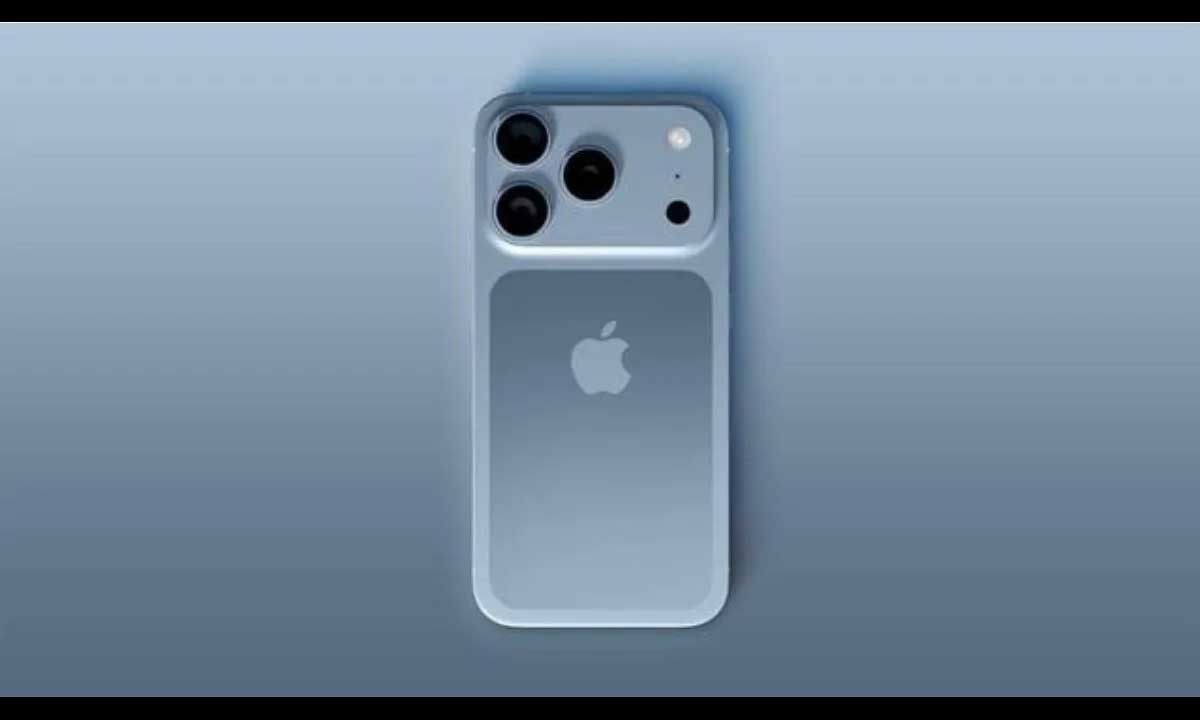As Apple gears up for its annual iPhone launch event in September, tech enthusiasts and industry insiders are already buzzing about what could be the most radical design departure in years—the iPhone 17 Air. Promising an ultra-slim chassis, impressively lightweight construction, and forward-thinking battery innovations, the iPhone 17 Air is shaping up to be more than just a new model; it may be a statement of Apple’s design evolution for the next decade.
According to recent leaks and analyst reports, Apple’s iPhone 17 Air will weigh just 145 grams and include a 2,800mAh battery, making it one of the lightest and thinnest iPhones ever made. While these specs may seem modest on paper, they are part of a much larger design philosophy that favors efficiency, portability, and cutting-edge power management over brute-force specifications.
Let’s take a deep dive into everything we know so far about this next-gen iPhone, including its expected design, battery capacity, display, performance, potential drawbacks, and what it means for Apple’s broader mobile strategy.
A New Era in iPhone Design: What “Air” Really Means
The “Air” branding isn’t new to Apple—having previously been used for lightweight versions of the MacBook and iPad—but this marks the first time it’s being applied to an iPhone. This strategic branding shift signals a renewed focus on minimalism, thinness, and ease of use—qualities that have long been appreciated by Apple users, especially those who value ergonomics and portability.
iPhone 17 Air Design: Ultra-Thin Meets Industrial Elegance
Rumors from reliable sources, including a prolific leaker known as “yeux1122” on Naver, suggest that the iPhone 17 Air could measure just 5.5mm thick—nearly 30% thinner than the iPhone 15 series, which averages around 7.8mm. This would make it the slimmest iPhone Apple has ever created and one of the thinnest smartphones on the market, period.
To achieve this design feat, Apple is reportedly reengineering key internal components, adopting newer, smaller chipsets, more compact camera modules, and likely switching to a new display substrate. Materials like titanium or even lightweight aluminum-lithium alloys may be in play to keep the device both durable and feather-light.
Weight Watchers: A Featherweight 145 Grams
At 145 grams, the iPhone 17 Air will be even lighter than the iPhone 15 (171g) and on par with models like the iPhone SE 2 (148g) and iPhone 13 mini (141g). For users who have long complained about heavy, unwieldy smartphones, this reduction could be a game-changer.
This lighter build will especially appeal to users who often carry their phones while jogging, exercising, or traveling—where every gram counts. Additionally, the reduced weight paired with a likely rounded-edge design may significantly enhance one-handed usability, a characteristic many large smartphones have gradually abandoned.
Battery Capacity: Is 2,800mAh Enough in 2025?
On the surface, a 2,800mAh battery may not seem revolutionary. That figure is less than the iPhone 15’s 3,349mAh capacity and only slightly more than the iPhone 12’s 2,815mAh. But Apple is betting on quality over quantity here. According to the same leak, this new battery will utilize high-density lithium-ion or possibly even silicon-anode technology to pack more energy into the same volume.
High-Density Battery Cells: A New Standard?
One of the most exciting developments surrounding the iPhone 17 Air is the likely use of high-density battery cells. These newer batteries are engineered to hold 15–20% more charge than traditional counterparts of the same size. If accurate, this would give the iPhone 17 Air an effective capacity of around 3,200–3,300mAh—comparable to current iPhone models but in a significantly smaller package.
Moreover, this aligns with ongoing supply chain reports, particularly those highlighting TDK’s expected delivery of next-generation silicon-anode batteries to Apple by mid-2025. Silicon-anode batteries not only hold more power but also recharge faster and degrade more slowly, addressing long-standing consumer concerns about battery longevity.
Apple’s Energy Efficiency Playbook
Beyond raw battery specs, Apple is known for integrating hardware and software in ways that maximize power efficiency. With the iPhone 17 Air, the company is expected to double down on this strategy.
A16 Pro or A17 Bionic Chip?
While the exact processor hasn’t been confirmed, it’s widely believed the iPhone 17 Air will house either an A16 Pro or a custom A17 chip built on a 3nm or 2nm process. These chips promise significant improvements in power efficiency and thermal performance. Lower energy consumption means that even a smaller battery can last longer on a single charge.
OLED Display with LTPO Support
Apple is likely to use an LTPO OLED display for the iPhone 17 Air. This would allow dynamic refresh rate scaling from 120Hz down to 1Hz, depending on the task. Such adaptive technology drastically reduces power draw during static tasks like reading or displaying notifications.
Real-World Battery Life: Cause for Concern?
Despite promising advancements, early internal testing reported by Wayne Ma at The Information suggests only 60–70% of users may find the iPhone 17 Air capable of lasting a full day on a single charge. That’s significantly lower than Apple’s ideal satisfaction threshold, which typically hovers around 85–90%.
This statistic raises concerns about whether Apple is pushing the limits of thinness at the expense of usability. After all, battery life remains one of the top three considerations for smartphone buyers.
A Battery Case: A Step Forward or Backward?
In what appears to be a preemptive solution, Apple is rumored to be developing a smart battery case specifically designed for the iPhone 17 Air. While such an accessory might feel like a concession, it also provides flexibility: users can enjoy the ultra-thin experience day-to-day and snap on a case when extra battery life is needed.
Apple may even innovate here by integrating MagSafe more deeply into the design or including solar assist charging in future accessories, although nothing in this direction has been confirmed.
Camera Configuration: Minimalist, Yet Capable
Another reason the iPhone 17 Air might achieve its razor-thin profile is through a revised camera array. Rumors suggest Apple may drop the Ultra Wide lens from the Air model, retaining only the primary wide-angle sensor.
This would free up internal space and allow for more compact internals. While some power users may miss the versatility of a triple-camera system, most casual users primarily rely on the main sensor anyway. Apple could enhance this single lens with a larger sensor size, improved optical stabilization, and smarter image processing to make up for the reduced hardware.
Connectivity and Modem Efficiency: The Role of the C1 Modem
A crucial factor in battery life is modem efficiency, and Apple is reportedly introducing a custom C1 modem in the iPhone 17 Air. Built in collaboration with TSMC and possibly borrowing tech from Apple’s acquisition of Intel’s modem business, this chipset is expected to be significantly more energy-efficient than Qualcomm’s equivalents.
This will be especially beneficial for users in 5G-heavy regions, where maintaining strong connections can otherwise be a battery drain.
Display Size and Form Factor: A Sweet Spot for Portability
Early prototypes suggest the iPhone 17 Air will sport a 6.1-inch display, mirroring the standard iPhone size. However, thanks to the reduced thickness and possibly narrower bezels, the phone could feel significantly smaller and more manageable.
This positions the Air model perfectly between the iPhone SE and iPhone 17 base model, attracting users who want a full-screen experience without the bulk of Pro models.
Who is the iPhone 17 Air For?
The iPhone 17 Air likely won’t be for everyone. Power users and mobile gamers may continue to prefer the Pro Max for its bigger battery and camera system. But for commuters, students, travelers, and minimalists, the Air offers an elegant, lightweight alternative with very few compromises.
It may also find favor among those in professional or fashion-forward industries, where the aesthetics of a slim, stylish phone matter just as much as the tech inside.
A Strategic Shift in Apple’s iPhone Lineup
The iPhone 17 Air is expected to replace the “Plus” model in Apple’s 2025 lineup. This move reflects a broader strategic shift. As consumer preference veers toward compact, lightweight phones that still offer top-tier performance, the Air fills a gap that Apple hasn’t fully addressed since discontinuing the iPhone 13 mini.
Paired with other 2025 iPhone models (iPhone 17, iPhone 17 Pro, iPhone 17 Pro Max), the Air variant rounds out Apple’s portfolio, offering a distinct identity rather than being just a smaller or cheaper version of another device.
Conclusion: A Risky Yet Visionary Leap
The iPhone 17 Air isn’t just another iPhone—it’s a statement. With its ultra-thin build, sub-150g weight, and next-gen battery technology, Apple is signaling a new era of design-focused innovation. While battery life remains the biggest wild card, Apple’s history of hardware-software optimization suggests it could defy expectations once again.
Will it be a runaway success? That depends on how well Apple balances elegance and endurance. But one thing’s for certain: the iPhone 17 Air is shaping up to be the boldest iPhone Apple has released in years—and one that may define the next chapter of smartphone design.
Stay tuned for Apple’s official unveiling this September, where all eyes will be on whether thinner truly means better.
Read Also:

